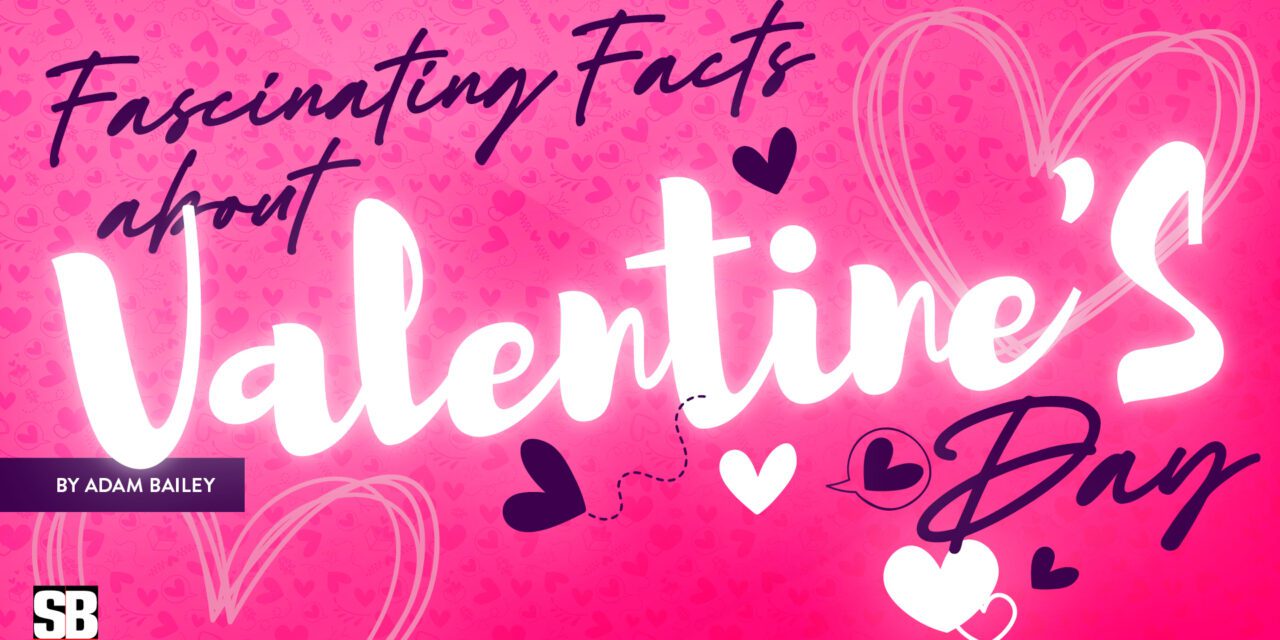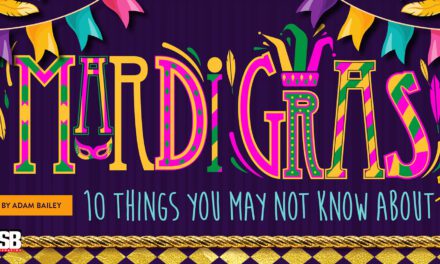When February 14th rolls around—lovers and friends exchange letters, chocolates, jewelry, and other gifts in honor of Valentine’s Day. While this popular holiday has become known for its cards, flowers and romantic dinner escapades, the history of Valentine’s Day is actually darker than most people realize. If you find yourself wondering about the origins of this mid-February holiday—and its candy-filled traditions—check out these fascinating Valentine’s Day facts, which offer a deeper look into the age-old celebration.
Valentine’s Day may have its roots in an ancient Pagan festival.
Though some historians believe that Valentine’s Day commemorates the death of St. Valentine on February 14th of each year, others believe that the holiday actually has its origins in a Pagan fertility festival called “Lupercalia”—which was celebrated on February 15th in ancient Rome. Dedicated to Faunus, the Roman god of agriculture, and the Roman founders Romulus and Remus, the day was celebrated by sacrificing animals and smacking women with animal hides—a practice that was believed to encourage fertility.
In the 1300s, Valentine’s Day officially became a holiday associated with love.
At the end of the 5th century, Roman Pope Gelasius officially declared the date of February 14th to be “St. Valentine’s Day.” However, it wasn’t until the Middle Ages that the holiday became associated with love and romance—a tradition that first started from the common belief in France and England that birds started their mating season on February 14th.
Lovebirds are actual birds.
While the term “lovebirds” has become a popular figure of speech, it’s also the common name for the Agapornis bird. This bird is a type of parrot that is native to the continent of Africa and can be found throughout the eastern and southern regions. The animals typically travel in pairs, which is why many couples are referred to as lovebirds.
Cupid has its roots in Greek mythology.
He’s the charming cherub—the winged angelic being—that appears on Valentine’s Day cards, often depicted with a bow and arrow. But how did Cupid become a common symbol of Valentine’s Day? According to Time Magazine, the figure can actually be traced all the way back to 700 B.C., to the Greek god of love named Eros, who was a handsome, immortal man with the intimidating power to make people fall in love. It wasn’t until the 4th century BCE that the Romans adopted Eros into the image of a cute little boy with a bow and arrow, naming him “Cupid.” By the turn of the 19th century, Cupid had become linked to Valentine’s Day due to his love-matching powers.
The first valentine was sent in the 15th century.
According to History.com, the oldest record of a valentine being sent was a poem written by a French medieval duke named Charles to his wife in 1415. Charles penned this sweet note to his lover while he was imprisoned in the Tower of London at just 21 years old. One of the lines in the poem? “I am already sick of love, My very gentle Valentine.”
The tradition of giving Valentine’s Day flowers dates to the 17th century.
Giving red roses may be an obvious romantic gesture today, but it wasn’t until the late 17th century that giving flowers became a popular custom. In fact, the practice can be traced back to when King Charles II of Sweden learned the “language of flowers”—which pairs different flowers with specific meanings—on a trip to Persia, subsequently introducing the tradition to Europe. The act of giving flowers then became a popular trend during the Victorian Era—including on Valentine’s Day—with red roses symbolizing deep love.
Americans spend millions and millions on Valentine’s Day each year.
Americans will spend over $20 billion on Valentine’s Day gifts—including $2.4 billion on candy alone! According to the National Retail Foundation, the average person will spend approximately $196 for Valentine’s Day, with men spending around $291 compared to women spending $106.
The Valentine’s Day gift that people spend the most money on is jewelry.
Candy and flowers might be some of the most common gifts for Valentine’s Day, but the category that we typically spend the most on for February 14th is jewelry, at a whopping $5.8 billion! The second most-paid-for gift on Valentine’s Day is an evening out on the town with $4.3 billion, followed by clothing, candy and then flowers.
Nearly 6 million couples get engaged on Valentine’s Day.
Valentine’s Day is one of the popular days to pop the question. I mean, what better day is there for a marriage proposal than a day literally dedicated to love and romance?
Conversation hearts got their start as medical lozenges.
Weirdly enough, the story of conversation hearts first began when a Boston pharmacist named Oliver Chase invented a machine that simplified the way medical lozenges—used for sore throats and other illnesses—could be made. The result was America’s first candy-making machine, because the pharmacist soon started shifting his focus from making lozenges to candy. Chase founded the New England Confectionery Company, or Necco, and the candy lozenges soon became what we know today as Necco wafers.
Today, more than 8 billion conversation hearts are manufactured each year. Necco has to start making them just days after February 14th to have enough in time for the next Valentine’s Day. Just so you know, that’s almost 100,000 pounds per day! Each box has approximately 45 sayings — including “True Love,” “Hug Me” and “You Rock” — but you can personalize your own, too. Don’t worry if you still have last year’s box — they have a shelf life of five years.
Valentine’s Day is celebrated differently around the world.
Many Latin American countries know the holiday as el Día de los Enamorados (day of lovers) or Día del Amor y la Amistad (day of love and friendship). Though couples exchange flowers and chocolate on this day, the holiday’s focus is also directed at showing gratitude to friends!
In Japan, it’s customary for just the women to give confections to the men in their lives, with the quality of the chocolate indicating their true feelings. On March 14th, exactly a month later, the men repay the favor by celebrating the increasingly popular “White Day.”
“XOXO” didn’t always mean hugs and kisses.
“XOXO” is a popular signature this time of year. The origins of the signature, however, stem from the Middle Ages. During those times the “X” symbolized the Christian cross, and letters ended with the sign of the cross and a kiss to symbolize an oath. As the gesture became more popular in literature, letters, and paperwork, it came to mean something had been “sealed with a kiss.”
There is an official Valentine’s Day alternative for singles.
International Quirkyalone Day is the holiday for single people on the same date. The holiday isn’t an anti-Valentine’s Day event, but rather a moment to celebrate individuality and platonic relationships. International Quirkyalone Day has been celebrated globally since 2003.
William Shakespeare inspired a tradition.
Writing “letters to Juliet” has become a Valentine’s Day tradition for many and even inspired the 2010 film Letters to Juliet. Around Valentine’s Day, thousands of letters are sent to Verona, Italy, addressed to the Romeo and Juliet character Juliet Capulet. These love letters to Juliet are filled with emotion, passion, and in many cases heartbreak. Volunteers, called Juliet’s secretaries, read through each letter, write responses and pick a winner of the “Cara Giulietta” (which translates to “Dear Juliet” in English) prize. The winner gets to visit Juliet’s home in Verona and attend a special ceremony.









